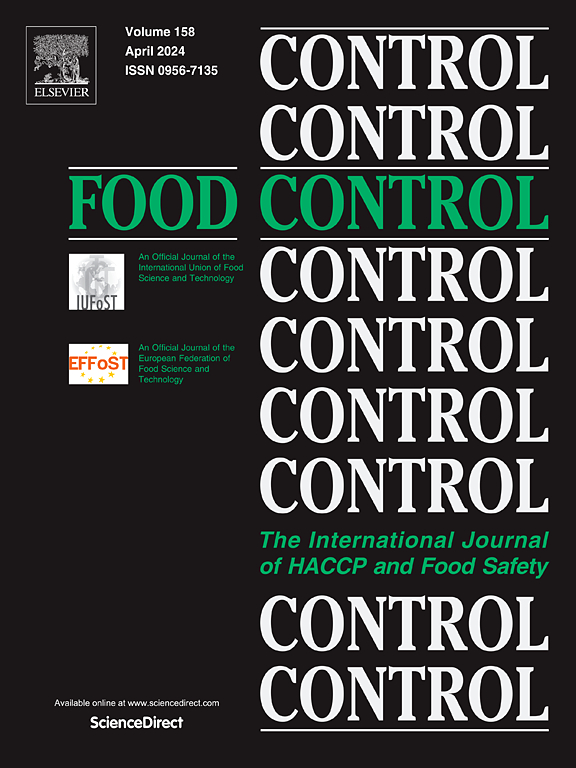Assessment of biogenic amines produced by microorganisms as food spoilage indicators by sensitive detection using portable opto-electrochemical tools based on biosensors
IF 5.6
1区 农林科学
Q1 FOOD SCIENCE & TECHNOLOGY
引用次数: 0
Abstract
The present work describes the studies carried out to evaluate the ability of microorganisms isolated from various samples of food to synthesize biogenic amines (BAs), as well as the detection of putrescine and histamine produced by these microorganisms by using miniaturized and portable opto-electrochemical bioanalytical tools. Several microbial strains isolated from food samples that possess the ability to produce BAs were identified by using MALDI-TOF mass spectrometry to be Gram-negative bacteria from the Enterobacteriaceae family, including Enterobacter, Citrobacter, Klebsiella, Escherichia, Proteus, Hafnia, Serratia and Kluyvera. Assessment of putrescine and histamine was carried out with high sensitivities and reproducibility by amperometry, electrochemical impedance spectroscopy (EIS) and electrochemiluminescence (ECL) using enzyme and aptamer-based biosensors. Simple and low cost amperometric biosensors based on screen-printed electrodes (SPEs) modified with single-walled carbon nanotubes (SWCNT), Prussian blue (PB) redox mediator and oxidases for detection of putrescine and histamine were developed by entrapment of diamine and monoamine-oxidases in sol-gel and chitosan matrices. The biosensors allowed the quantification of putrescine and histamine with sensitivities of 168.9 mA M−1∙cm−2 and 31.6 mA M−1∙cm−2, respectively, at an applied potential of 0.05 V vs. Ag/AgCl. The detection limit was 4.2 μM for putrescine and 9.8 μM for histamine (S/N = 3). Opto-electrochemical determination of histamine was achieved by using specific aptasensors. The highest amounts of BAs were found in the fish and chicken meat samples, while the lowest concentrations were found in alcoholic beverages. The results are in very good correlation with the microbial studies carried out on different food samples collected from Romanian markets.

求助全文
约1分钟内获得全文
求助全文
来源期刊

Food Control
工程技术-食品科技
CiteScore
12.20
自引率
6.70%
发文量
758
审稿时长
33 days
期刊介绍:
Food Control is an international journal that provides essential information for those involved in food safety and process control.
Food Control covers the below areas that relate to food process control or to food safety of human foods:
• Microbial food safety and antimicrobial systems
• Mycotoxins
• Hazard analysis, HACCP and food safety objectives
• Risk assessment, including microbial and chemical hazards
• Quality assurance
• Good manufacturing practices
• Food process systems design and control
• Food Packaging technology and materials in contact with foods
• Rapid methods of analysis and detection, including sensor technology
• Codes of practice, legislation and international harmonization
• Consumer issues
• Education, training and research needs.
The scope of Food Control is comprehensive and includes original research papers, authoritative reviews, short communications, comment articles that report on new developments in food control, and position papers.
 求助内容:
求助内容: 应助结果提醒方式:
应助结果提醒方式:


